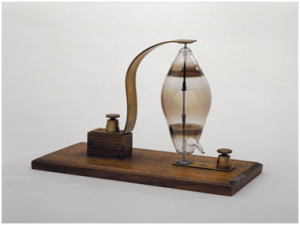LED Lights - A Brief History With Massive Potential
Posted by Amit Soni on 19th Sep 2011
 The Daily Mail Online recently undertook a special report on the world's oldest bulb, which reached its 110th year of operational life on June 18th 2011.
The Daily Mail Online recently undertook a special report on the world's oldest bulb, which reached its 110th year of operational life on June 18th 2011.
What makes this story particularly noteworthy is that incandescent light bulbs like the one that’s lit Livermore Fire Station #6 in California since 1901, normally have a life-expectancy of around 1000 hours. Thus, the phrase “They don’t make ‘em like that any more,” rings especially true in this case!
Thinking Back
We take light bulbs for granted these days, but it’s interesting to think that their origins date back as far as 1802 with Sir Humphry Davy and his invention of the first electric light. Later, British physicist and chemist Sir Joseph Wilson Swan played a large role in the development of the first incandescent light bulb, and was granted a patent on the 27th of November 1880.
However, it’s American inventor, businessman and flamboyant self-publicist, Thomas Alva Edison who is most often credited with producing the world’s first light bulb. Following his audacious lighting demonstration on New Year’s Eve 1879, he was dubbed “The Wizard of Menlo Park,” and his incandescent light bulbs eclipsed thos of his competitors in the public imagination.
Whilst his showmanship is legendary, it’s also fair to say that his light bulb was not only longer lasting than those of his counterparts, it was much more economically viable as well.
Thus, the incandescent light bulb was formed and apart from a few minor tweaks, such as the introduction of tungsten for use as filaments in 1906, its development really did not progress much further. This means we’ve been lighting our homes with technology that’s over a century old!
With the advent of LED lighting, all of this began to change. The first practical visible-spectrum (red) LED lights were developed by American engineer and educator Nick Holonyak Jr. in 1962. Then a researcher at General Electric’s laboratory in Syracuse, New York, Holonyak Jr. reported his invention in the journal Applied Physics Letters on the 1st of December of that year.
From those very small beginnings, an entire industry began to emerge. As the 1970s dawned, red LEDs began to make in-roads into consumer products like the early digital watches. Very soon, green, orange and yellow LEDs would be following hot on their heels.
Unlike incandescent bulbs, LEDs’ performance and effectiveness continued to improve throughout the 1980s, but it wasn’t until 1993 that the next big development in LED took place and white LED lights were born.
Looking Forward
Prior to this, it was only possible to utilise LEDs as substitutes for incandescent and neon indicators in televisions, computers and remote controllers, however, when the higher-intensity white light became available, they began to be used much more frequently in both domestic and commercial applications.
The latter of these is demonstrated in this time-line showing LEDs’ inexorable advance into retail illumination:
- 2003 – The cost of LED fell from £230.00 to approximately £50.00 per 1000 lumens of brightness. An individual LED bulb cost around £50.00.
- 2004 – Tesco announced that it was examining the potential of LED, stating that “[it uses] much less power, releases less heat into the refrigeration areas, and has lower maintenance costs.”
- 2005 – Walmart trialled LED lighting in freezers, attracted by their vastly improved lifespan in comparison with existing bulbs, and their 100% reliability in a freezing environment.
- 2006 – Tesco launched a flagship ‘eco-store’, featuring LED chillers, and the price of LED dropped to £30.00 per 1000 lumens.
- 2007 – In Eschenbach, Switzerland, a supermarket became the world’s first to be completely illuminated by LEDs.
- 2009 – Greggs became the first retailer in Europe to light the sales area of its Bromley concept store with LEDs, and the company’s expectation of a 50% reduction in lighting electricity consumption was greatly surpassed. The price of lumens again dropped, this time to £16.00 per 1000.
- 2011 – Walmart opened its first 100% LED-lit store, in Witchita, Kansas, and realises a 140,000 kW/h saving, the equivalent of powering 10 homes.
So, LED lighting continues to improve in quality at an almost exponential rate, simultaneously falling in price. Very soon it’s expected to drop below £1.25 per 1000 lumens and become over 90% more energy-efficient than incandescent light to produce.
LED bulbs have a massive 50,000 hour life-expectancy, meaning they’ll still be burning in over 17 years. Not quite the Livermore Centennial Light, but more than enough to save you on more than 20 traditional incandescent bulbs!





